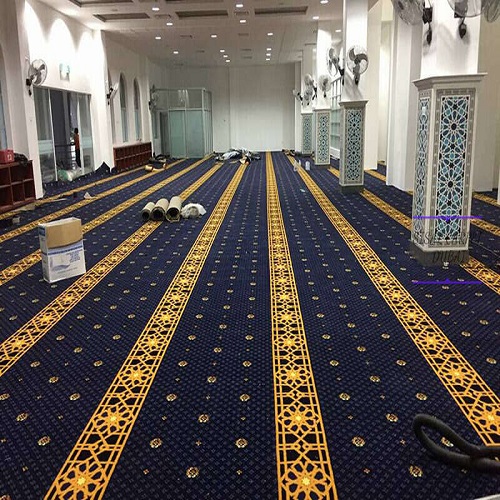Blog

The Artistry and Symbolism of Mosque Carpets: Unveiling the Stories Woven Beneath Our Feet
In the realm of Islamic art and architecture, mosque carpets stand as silent storytellers, weaving tales of history, culture, and spirituality beneath the feet of worshipers. These intricately crafted masterpieces go beyond their utilitarian purpose, transcending into realms of artistry and symbolism that hold profound meaning for the Islamic community. Each knot, color, and pattern is carefully chosen, reflecting a rich tapestry of tradition, identity, and faith.
The tradition of using carpets in mosques dates back centuries, tracing its roots to the early Islamic civilizations. Initially, carpets were seen as practical solutions to the challenges of cold and uncomfortable floors. However, as time unfolded, the weaving of mosque carpets evolved into a distinctive form of art, deeply embedded with symbolic meaning.
One of the most striking features of mosque carpets is their intricate geometric patterns. These patterns, often arranged in mesmerizing symmetry, symbolize the order and harmony inherent in Islamic teachings. The repetition of geometric shapes, such as stars, polygons, and arabesques, not only creates a visually stunning effect but also serves as a reflection of the cosmic order and unity emphasized in Islamic philosophy.
Colors play a pivotal role in the symbolism of mosque carpets. Traditional Islamic colors like deep red, green, blue, and gold are carefully chosen for their symbolic significance. Red represents the vitality and passion of life, green symbolizes paradise and fertility, blue is associated with the divine and heavenly realms, and gold embodies purity and wealth. The harmonious combination of these colors not only adds to the visual appeal of the carpets but also infuses them with layers of meaning that resonate with the spiritual aspirations of the worshipers.
The artistry of mosque carpets extends beyond the visual realm, delving into the tactile experience. The process of crafting these carpets involves skilled artisans who meticulously tie each knot by hand, a practice that demands patience, precision, and a deep understanding of the craft. This manual labor not only reflects the dedication of the artisans but also reinforces the idea of the human connection with the divine, as each knot becomes a testament to the weaver’s devotion and skill.
Symbolically, the act of prostration during prayers creates a direct connection between the worshiper and the carpet. The soft, yielding texture of the carpet serves as a metaphor for humility and submission before the divine. As individuals bow and kneel in prayer, the carpet beneath them becomes a sacred space, absorbing the echoes of devotion and forming a tangible bridge between the earthly and the spiritual.
Mosque carpets also often feature intricate floral and botanical motifs, mirroring the beauty of the natural world. These patterns not only add aesthetic charm but also symbolize the interconnectedness of all living things and the divine order manifested in nature. The choice of floral motifs can vary, with some carpets featuring stylized depictions of plants and flowers, while others showcase more abstract representations, inviting contemplation and reflection during prayer.
Furthermore, the mihrab, a niche in the mosque that indicates the direction of Mecca, is a central element in many mosque carpets. The mihrab design on the carpet emphasizes the focal point of worship, serving as a visual guide for worshipers during prayer. This symbolic representation reinforces the idea of unity and common orientation among Muslims worldwide, as they collectively face the sacred city of Mecca during their prayers.

